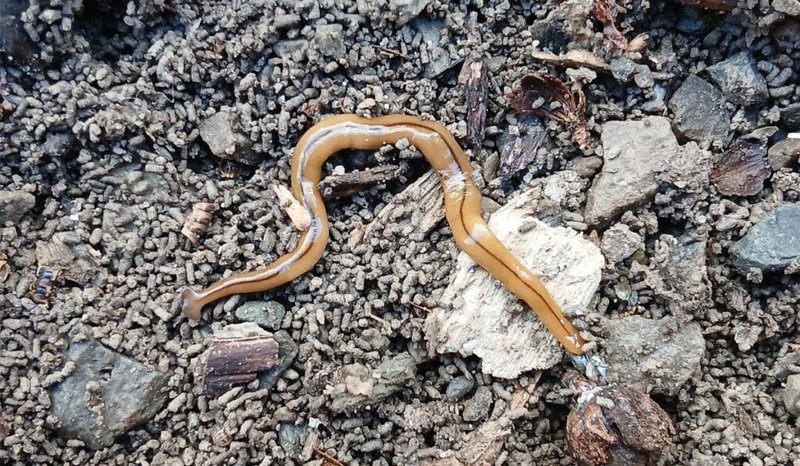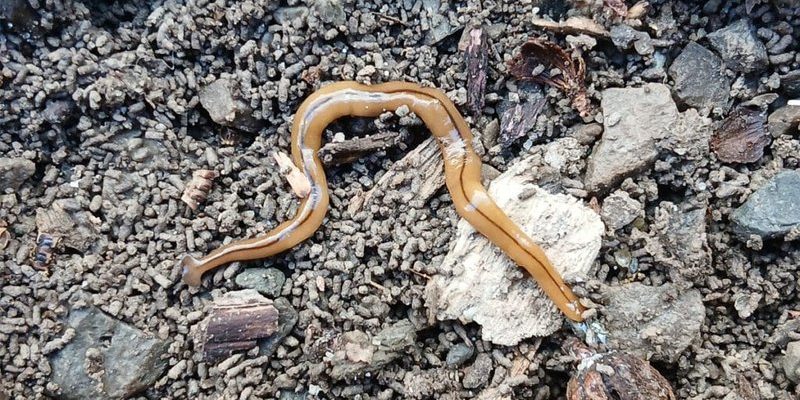
Hammerhead worms, scientifically known as *Bipalium spp.*, are not just interesting due to their appearance. They play a role in the ecosystem, primarily feeding on other worms. However, if you’re noticing more of them around, you might be curious about what’s driving their activity. Let’s dive into the moisture conditions that these unique worms love, how they thrive, and what this means for your garden.
What Are Hammerhead Worms?
To kick things off, let’s clarify what hammerhead worms actually are. These exotic worms belong to a group of flatworms known as planarians. Their most notable feature? That distinctive shovel-like head, which can give them a rather unique look. You might spot them in gardens or backyards, where they can grow to be about 12 inches long, depending on their species.
These creatures are predatory, primarily munching on earthworms. While they’re not harmful to humans, they can disrupt the balance in your garden’s soil ecosystem. Monitoring their presence is key, especially if you’re nurturing a vibrant vegetable patch. If you’re finding more of these guys, it’s worth considering the moisture conditions that might be encouraging their growth.
Why Moisture Matters for Hammerhead Worms
You might be wondering why moisture is such a big deal for hammerhead worms. Here’s the thing: these worms are highly dependent on humidity and moisture for survival. Think of them like a sponge; they thrive in wet environments. Without enough moisture, they may dry out, which can lead to a quick demise.
Moist environments provide the ideal habitat for hammerhead worms. They prefer places that are consistently damp, like shady areas in gardens or places with compost piles. When rain is abundant or when the soil is regularly watered, these worms flourish. If you’re keen on keeping your garden health in check, understanding how moisture influences these worms is essential.
Ideal Moisture Conditions
So, what are the **ideal moisture conditions** for hammerhead worms? Here’s where it gets interesting. Hammerhead worms thrive in environments that are consistently moist but not waterlogged. This sweet spot allows them to move around easily while ensuring they remain hydrated.
– **Humidity Levels:** Hammerhead worms love high humidity. If the surrounding atmosphere is moist, these worms will be more active.
– **Soil Moisture:** Well-drained soils are perfect. If the soil retains moisture without becoming soggy, it creates a prime habitat.
– **Organic Material:** Areas rich in organic matter tend to hold moisture better. Think about incorporating compost or mulch, which can attract worms while keeping the soil moist.
If your garden has these conditions, you might find hammerhead worms becoming more prevalent. Keeping an eye on the moisture level will give you a good indication of their activity.
Seasonal Factors Influencing Moisture
You might also wonder how different seasons affect moisture levels. In spring and fall, for instance, rainfall typically increases, creating an ideal time for hammerhead worms to be active. Interestingly, during dry summer months, they might go dormant, hiding away in the soil until conditions improve.
Here’s a quick breakdown of how each season affects moisture:
– **Spring:** This is often the wettest season, with rain showers helping to create perfect conditions.
– **Summer:** While some areas may have dry spells, frequent watering can keep moisture levels up, allowing worms to thrive.
– **Fall:** With the return of rain and cooler temperatures, these worms become more active as the soil remains damp.
– **Winter:** In colder climates, extreme frost can drive them deep into the soil, causing reduced activity until conditions improve.
Understanding these seasonal shifts can help you predict when you’ll see more or fewer hammerhead worms.
Managing Hammerhead Worms in the Garden
If you’re keen on keeping hammerhead worms in check, it’s helpful to manage the moisture levels in your garden. Too much moisture can lead to an explosion of these worms, while too little can cause them to retreat. Here are some steps you can take:
– **Less Watering:** Try to adjust your watering schedule. Giving the soil a chance to dry out may reduce their numbers.
– **Proper Drainage:** Ensure your garden has good drainage to prevent areas from becoming waterlogged.
– **Mulching Wisely:** While mulch can help retain moisture, using it correctly can also deter excess moisture.
By taking these steps, you can create an environment that’s less hospitable to hammerhead worms while still maintaining a healthy garden ecosystem.
In the end, understanding **moisture conditions** is crucial for managing hammerhead worms in your garden. These unique creatures thrive in damp environments, making it vital to keep an eye on your garden’s humidity and soil moisture levels. With the right approach, you can control their activity, ensuring your garden stays healthy and vibrant.
By adjusting your watering practices and being mindful of how moisture interacts with your soil, you can strike a balance that works for you and your plants. Happy gardening, and keep those hammerhead worms in check!

